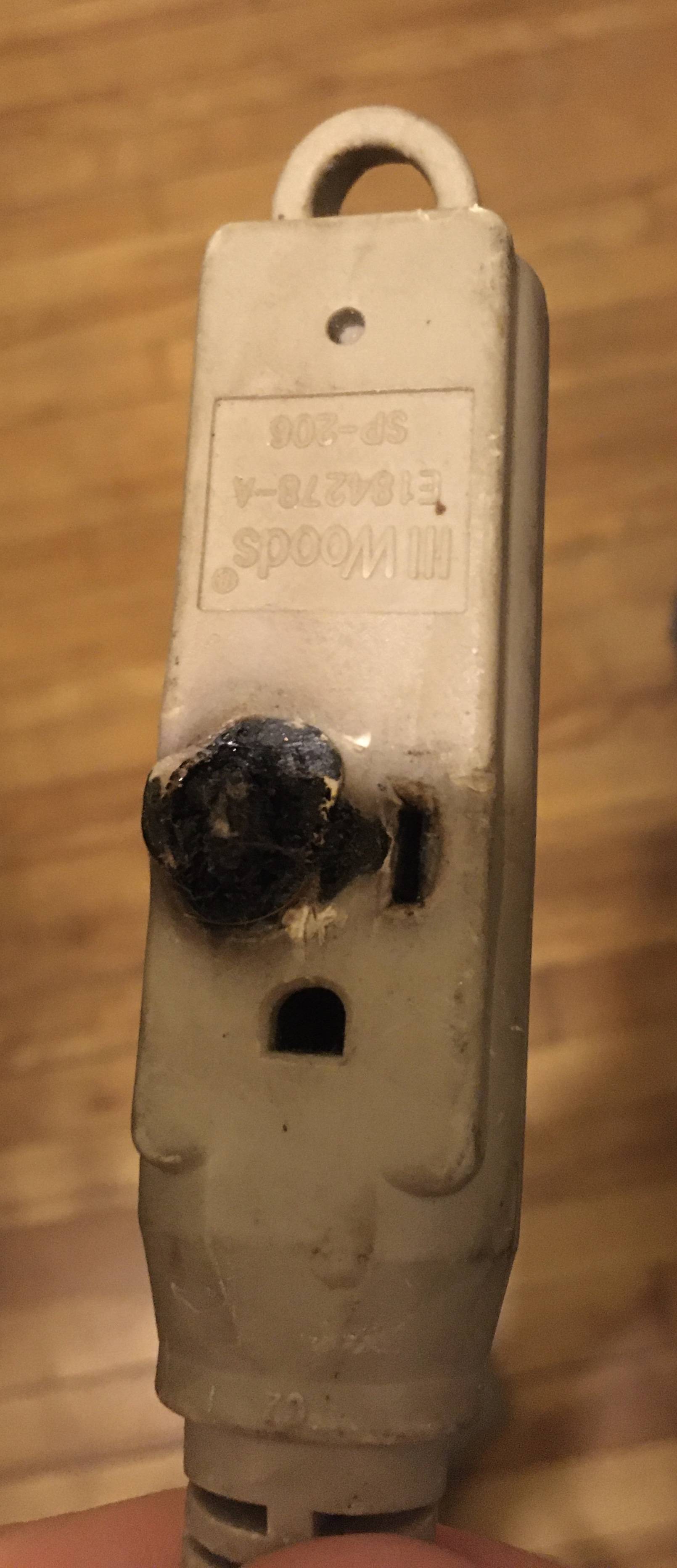I live in an old apartment where 2 electrical circuits have been installed, as was standard back then when people only had a few bulbs and maybe a radio set. Central heating works in all rooms except bathroom, the reason why I usually put a small, fan-forced electric heater on low setting to keep the place comfortable.
Since my kitchen appliances also require quite a bit of power, I ran a large gauge extension (the kind used for air conditioners, 14AWG) from an outlet that's not as heavily loaded to avoid tripping the breaker when using the coffee machine.
Now, low setting means the heater is pushing about 600W of heat in the room, on and off, following the thermostat setting. The actual voltage in my place is 114VAC (measured from Elgato's Eve home monitor).
I had to unplug it to clean it (routine maintenance), and noticed the wide (aKa neutral) blade was blackened and pitted, while the narrower blade is still pristine. The extension was a bit warm, but not the heater's own cord (HPN-type).
What would cause such a problem in the plug of an extension designed to pass 1800W when used with a medium, intermittent load with no large inrush current?


